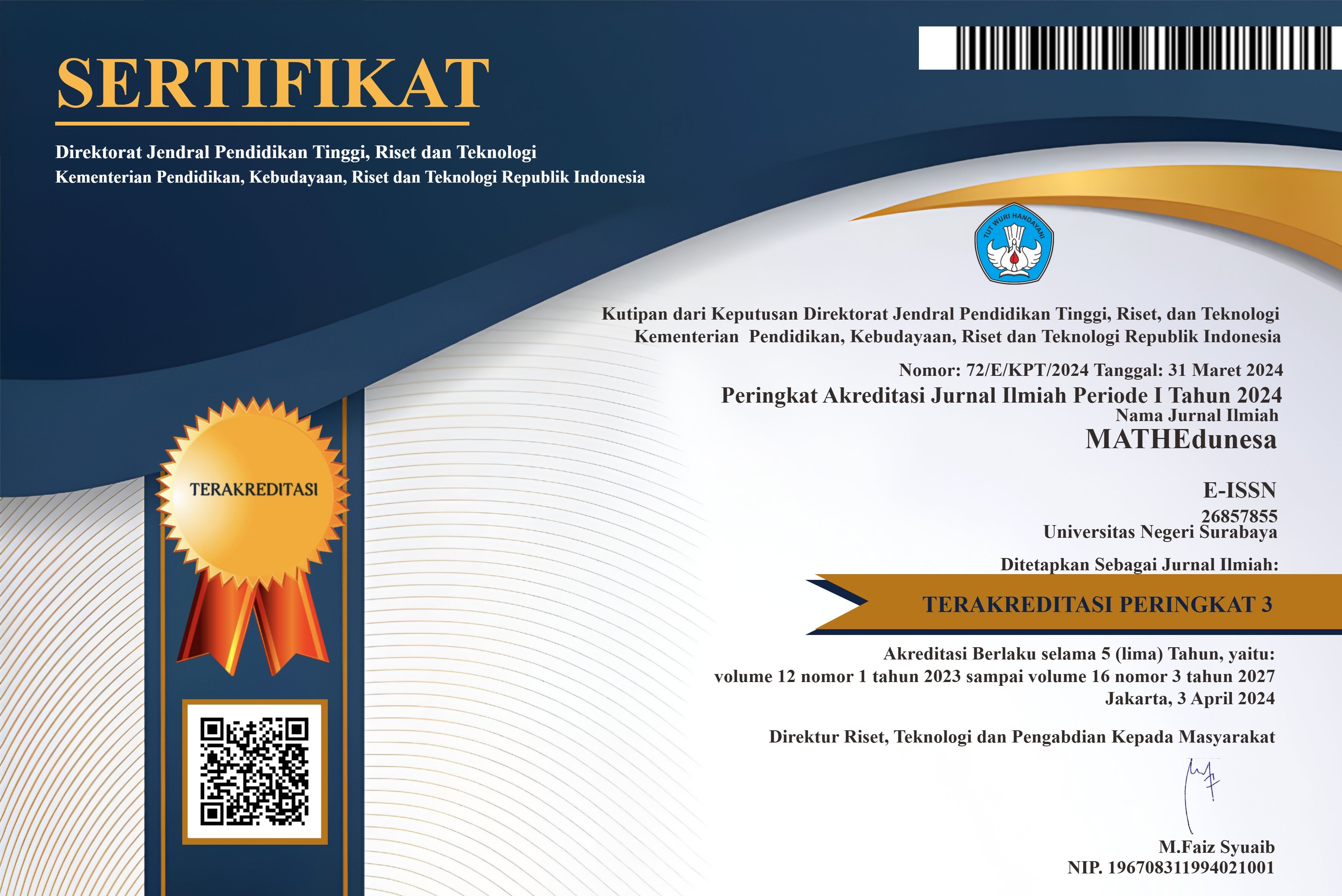Kegagalan Scaffolding Berpikir Kritis Peserta Didik SMP Secara Kolaboratif dalam Menyelesaikan Masalah Geometri: Studi Kasus
DOI:
https://doi.org/10.26740/mathedunesa.v13n1.p300-317Abstract
Diagnosing learners' difficulties in solving math problems is one of the steps in finding and overcoming these learners' difficulties. This qualitative research describes the difficulties of junior high school students in critical thinking and the form of scaffolding provided collaboratively. This research is a case study of two junior high school students who experienced failure in scaffolding. The instrument used was task-based interviews. The task in question is a critical thinking ability test. Data analysis was conducted using four indicators of critical thinking according to Facione: interpretation, analysis, evaluation, and inference. Scaffolding used in this study is scaffolding proposed by Anghileri. The results showed that in the interpretation indicator, students had difficulty explaining what was known and asked in the problem and were given scaffolding reviewing. In the analysis indicator, students have difficulty determining the solution method and the relationship between formulas regarding the height of the triangle and are given scaffolding reviewing and restructuring. In the evaluation indicator, students have difficulty performing calculations and are given scaffolding reviewing. In the inference indicator, students have difficulty drawing conclusions and are given scaffolding reviewing and developing conceptual thinking. The results showed that after being given scaffolding, students still made mistakes again which were caused by the lack of student accuracy and the tendency of students to rush so that they chose a faster but less precise way. Therefore, teachers must provide practice problems continuously so that they can train students' accuracy and students are accustomed to varied solutions
Downloads
Downloads
Published
Issue
Section
 Abstract views: 121
,
Abstract views: 121
, PDF Downloads: 119
PDF Downloads: 119




